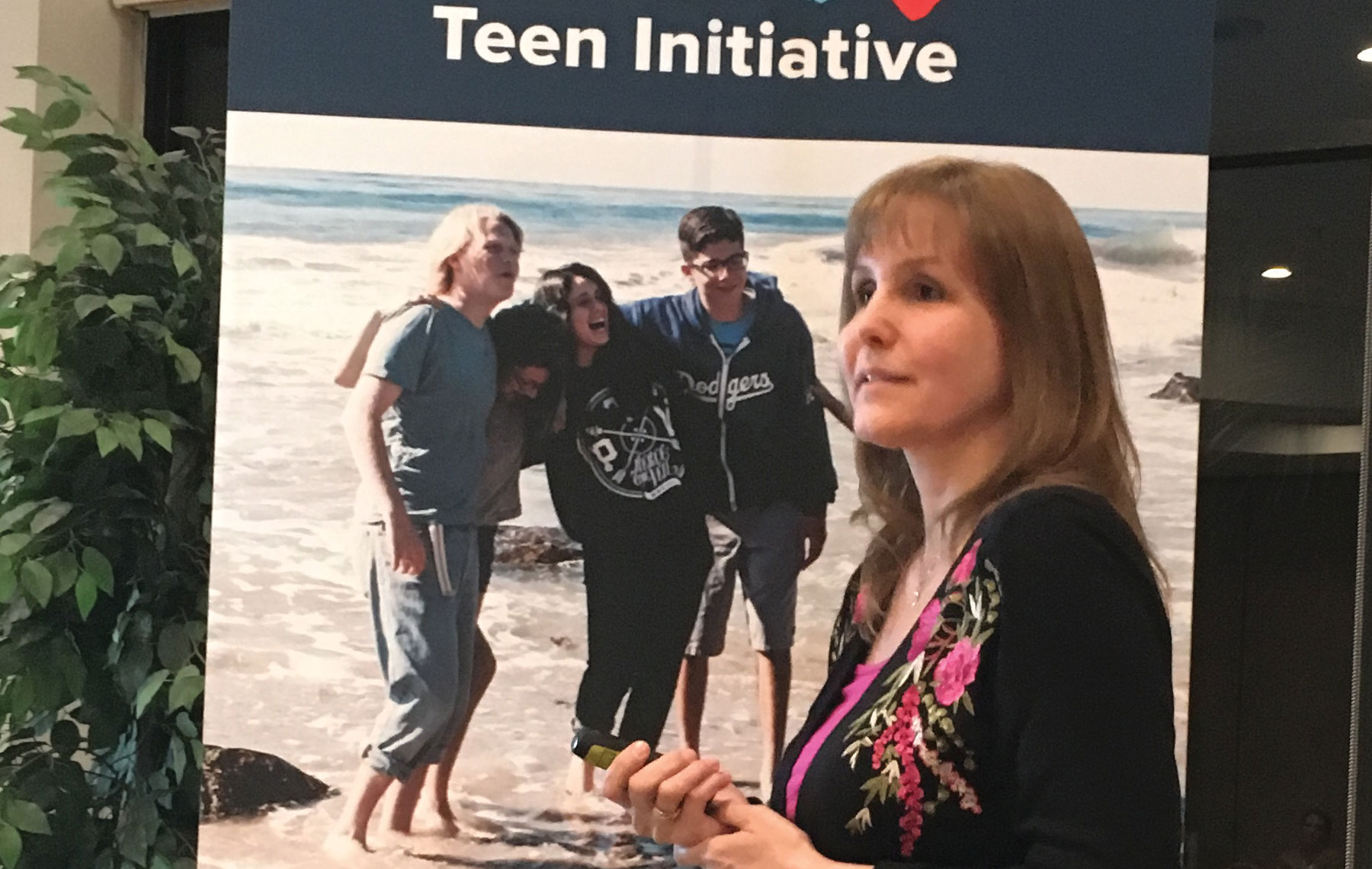 Photo by Leslee Komaiko
Photo by Leslee Komaiko Vaping, Juuling, BHO, CDB, 710, e-juice. If those terms and abbreviations sound unfamiliar, there’s a good reason. It’s a new world when it comes to marijuana and nicotine, with an entirely new language.
Last weekend, the LA Jewish Teen Initiative, a program of The Jewish Federation of Greater Los Angeles, sponsored a workshop designed to educate parents on the new language and to help them better communicate with their teens about drugs and drug use.
The free two-hour workshop, held at Shomrei Torah Synagogue in West Hills, was led by Linda Gingras, director of addiction and prevention services at Jewish Family Service of Los Angeles.
Gingras began the program with a quote from rabbi and psychiatrist Abraham Twerski: “The first step is awareness. As long as we believe the problem is not ours, we will do nothing.”
She then dove into the difference between the marijuana of 30 years ago, which had a THC percentage of around 1 percent (THC is the psychoactive component that delivers the high), and the marijuana of 2018, which averages around 15 percent THC, though some strains, she said, are testing closer to 30 percent. Combine this significantly increased potency with new delivery methods that are easier, cleaner and more discreet, and “this doesn’t feel like drugs,” Gringas said. “It doesn’t have the paraphernalia attached to it. So it feels safer. That’s a real dangerous place.”
To illustrate her point, Gingras showed a picture of various marijuana edibles widely available today. Lollipops, she said, are especially popular. But there are also chocolate bars and gummy candies. One might guess that one chocolate bar or a handful of gummy candies might equal one “dose” (10 mg of marijuana). But in fact, more often, it’s just one little square of a chocolate bar or a single gummy candy that delivers a dose sufficient to get someone high, she said. Gingras also noted, “Who eats just one gummy bear?” In addition, because the effects of these edibles can be delayed, there is temptation to consume more and more.
So what’s a concerned parent to do? According to Gingras, talk. Talk to your teens about how they can make good choices. Ask open-ended questions. “The goal is not just to be heard,” Gingras said, “but to be understood and to interact. So often our reaction may be to preach or moralize, to yell or be punitive. But is this keeping the communication open? Or am I just being reactive because I am scared?”
“The teen brain is geared to have that sense of immortality. Impulse control and rational decision-making is the last part of the brain that develops.” — Linda Gingras
Gingras suggested establishing a clear family position on alcohol and drugs and communicating it to your teens. For some families, this might be zero tolerance. Others may have specific rules about when alcohol and pot can be used and where.
“So often parents say, ‘we didn’t think it would be a problem with our kids,’” Gingras said. “So they don’t talk about it, ever. Others have a meaningful conversation with their 13-year old and never bring it up again.”
She also recommended talking through various scenarios and discussing strategies for coping with situations before they happen. For example, you’re at a party and you drank too much and you’re afraid to call home. Gingras mentioned that while most teens now have Uber or Lyft on their phones, having another trusted adult whom they can call besides their parents can be helpful.
“The teen brain is geared to have that sense of immortality,” Gingras said. “Impulse control and rational decision-making is the last part of the brain that develops. Help them think it through. After the fun, what could happen? And it may not be physical things.” For example, she said, “If someone posted a picture of you drunk on social media, how would that affect your life?”
Don’t wait until something happens to have these conversations. “Start early,” Gingras counseled. “The more you are having the conversation, the more they are going to know you are aware.”






















 More news and opinions than at a Shabbat dinner, right in your inbox.
More news and opinions than at a Shabbat dinner, right in your inbox.